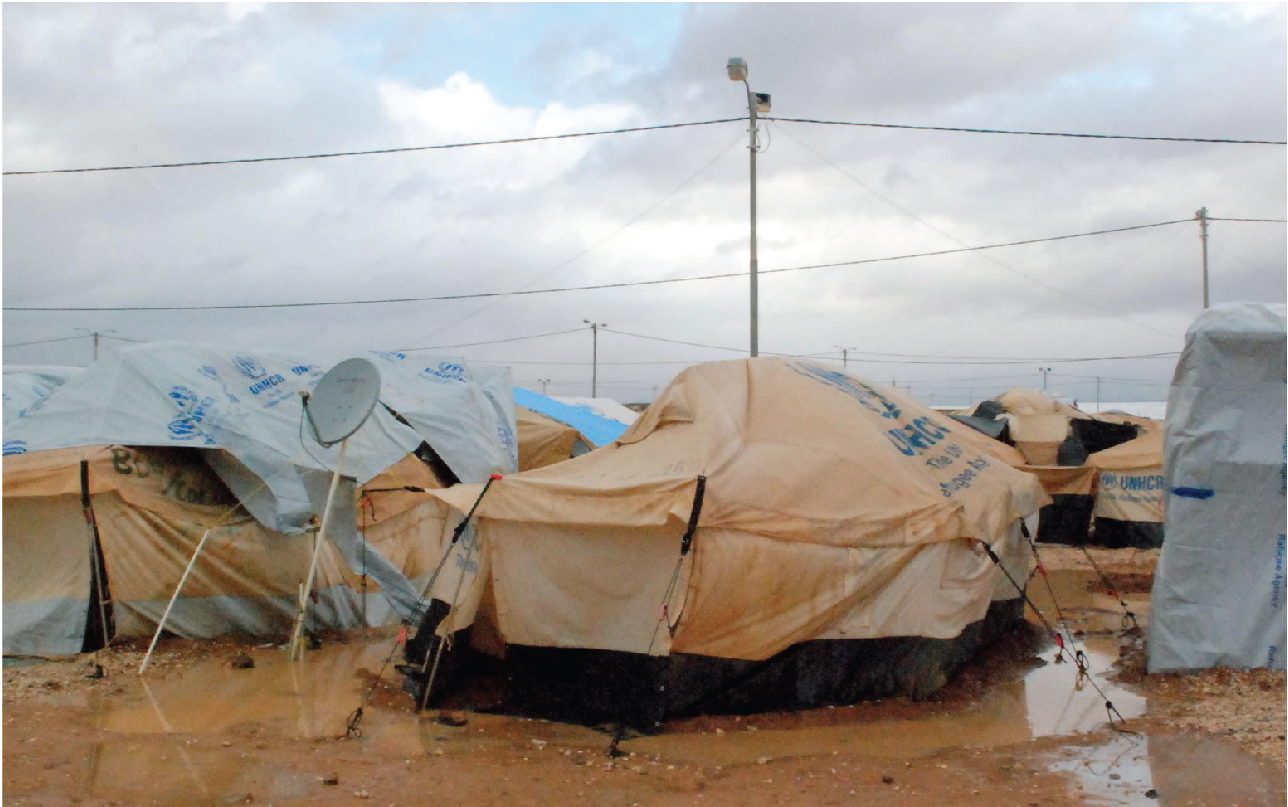
The Radicalization of the Middle East
It’s just five miles from Zaatari, in northern Jordan, to the Syrian border. I had come there in June to see one of the world’s largest refugee camps—row upon row of tents and trailers sprawled across a hot, dusty, featureless, colorless desert.
Killian Kleinschmidt, a Berlin-born 50-year-old who runs the camp for the United Nations High Commissioner for Refugees (UNHCR), is plainspoken. “This is an unhappy place,” he tells me. “That’s natural. People who lose their homes are unhappy. People who lose husbands, fathers and children are unhappy. Many of the people here have all that and more.”
But Zaatari, he adds, also is “a dangerous place. That’s not so natural.” Among the more than 150,000 refugees are thieves, counterfeiters, rapists, drug traffickers, smugglers, youth gangs, “mafias” and “revolutionaries.” He has seen the flags of Jabhat al-Nusra, an al-Qaeda affiliate.
For all that, the danger is greater across the border in Syria, where more than 100,000 people have been slaughtered over the past two years in a brutal civil war. That’s far more than have been killed on both sides in more than half a century of Palestinian-Israeli conflict.
A few days later on the same trip, I was gazing directly at Syria from the Golan Heights, a strategic highland that fell to Israel in 1967 when she was forced to defend herself from the combined forces of Syria, Egypt, Jordan and Iraq. Their unambiguously stated goal back then: the Jewish state’s extermination.
Peering into the fertile valley below, I could make out the outpost of the United Nations Disengagement Observer Force (UNDOF), established in 1974 just after the Yom Kippur War, another conflict launched by Syria, Egypt and other Arab states. Before those hostilities ended, Israeli troops had advanced to within 25 miles of Damascus and 63 miles of Cairo.
I would argue that this fact, more than any other—certainly more than the presence of UN observer forces—explains why there has not been a subsequent major Arab-Israeli war. In any case, over the decades since, UNDOF troops have not convincingly demonstrated their utility. In recent months, they’ve found themselves caught in the crossfire between Syrian government and opposition forces. In response, the Austrian and Croatian components of UNDOF have packed up and gone home.
It’s often forgotten that Syria’s civil war began with peaceful protests. Perhaps inspired by the early and hopeful days of the “Arab Spring” in Tunisia and Egypt, demonstrators took to the streets to demand rights and protest authoritarianism. Bashar al-Assad, Syria’s British-educated dictator, for years regarded by many in the West as a moderate, responded with ruthless violence.
That catalyzed a rebellion. Initially, it was dominated by nationalists who were neither religious extremists nor anti-American. I was in touch with a number of them. But the United States and Europe refused their requests for serious support, expressing confidence that Assad’s fall was inevitable. I recall meeting with American officials who stressed the need for a “diplomatic solution.” They simply needed to persuade the Russians to cooperate—surely not so difficult now that relations had been “reset”—and help smooth the transition from dictatorship to democratic governance.
Before long, al Qaeda-linked combatants were streaming across Syria’s borders—largely from Iraq where these groups had been reconstituting themselves since the American withdrawal—and establishing themselves as the most effective force fighting Assad. In a way, that benefited the dictator: From the start, he had attempted to brand all those opposing him as dangerous radicals, even as he was doing the bidding of the dangerous radicals who rule Iran.
In the view of Frederic Hof, who served in the State Department as a special advisor for Syria until earlier this year, the administration “now reaps what it has sown on Capitol Hill: a pervasive sense of skepticism that the United States can do anything remotely useful or right in Syria.” In recent months, Hof notes, President Obama has equated Syria with the Congo, and Chairman of the Joint Chiefs General Martin Dempsey pronounced himself unsure as to the identity of an opposition worthy of U.S. support.
Meanwhile, with robust support from Russia, and Iran and Hezbollah more or less taking charge on the ground, Assad has been making gains. He may now be poised to reestablish control of the more developed western areas of Syria, along the Mediterranean and the Lebanese border. In impoverished eastern Syria, he may just be able to let the rebels fight among themselves.
Israelis are watching all this with apprehension, maintaining “strategic silence” but also making clear that they have priorities. As one official told me, “The survival of Assad is not an outcome we would like to see. That would make Iran stronger. A stronger Iran would be a bad outcome.”
Michael Morrell, the No. 2 official at the CIA, recently told The Wall Street Journal that there are now “more foreign fighters flowing into Syria each month to take up arms with al Qaeda-affiliated groups than there were going to Iraq to fight with al- Qaeda at the height of the war there.”
Perhaps those groups will continue to battle Assad for months or even years. Perhaps they will attempt to establish themselves in safe havens, bases they can use for attacks on Israel and/or Jordan, two islands of relative tranquility being pressed into a closer—if still uneasy—alliance. If so, only one outcome is sure: More and more of the Middle East will continue to become like the camp in Zaatari, an unhappy and very dangerous place.
Clifford D. May is president of the Foundation for Defense of Democracies, a policy institute focusing on national security.
